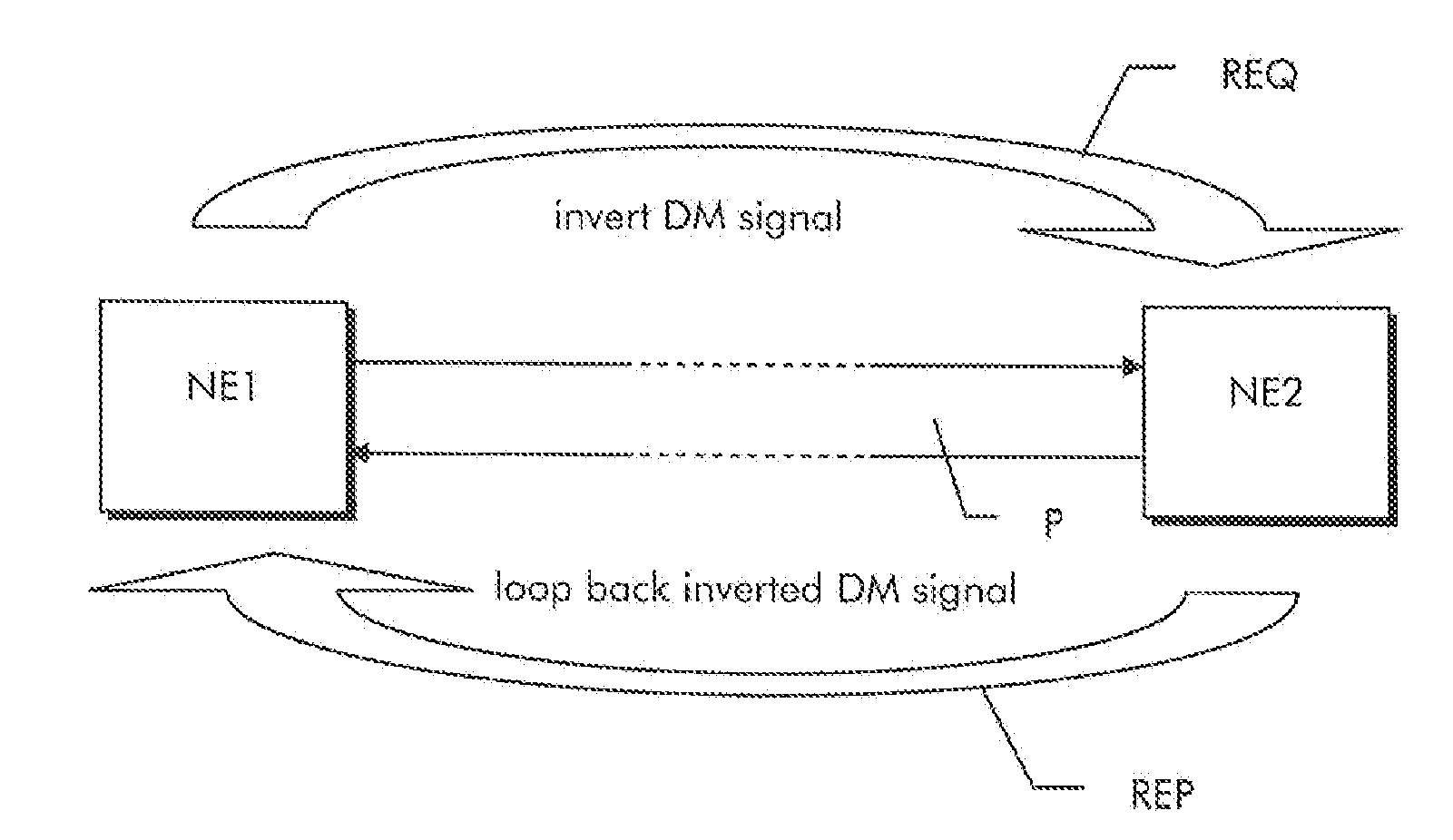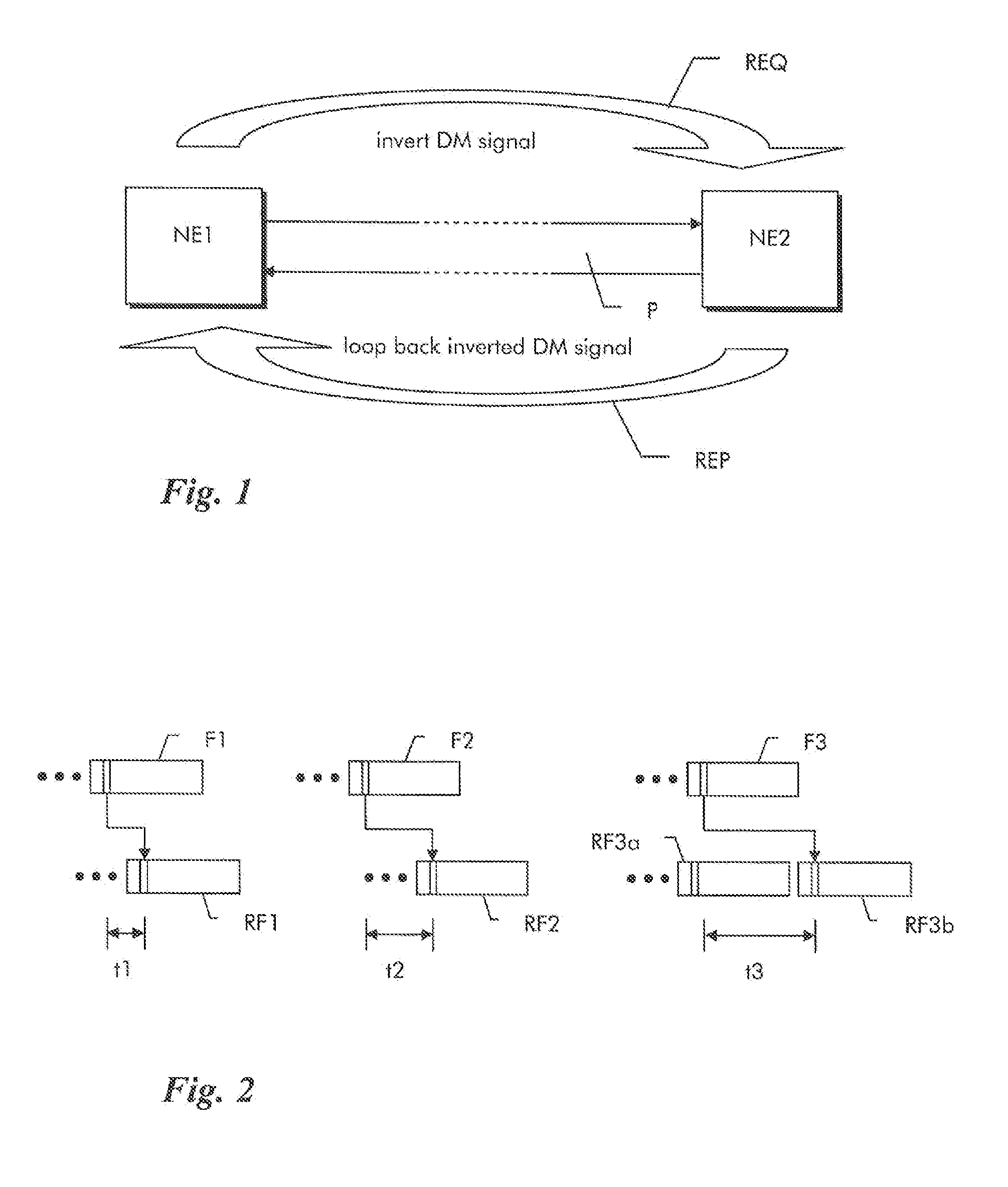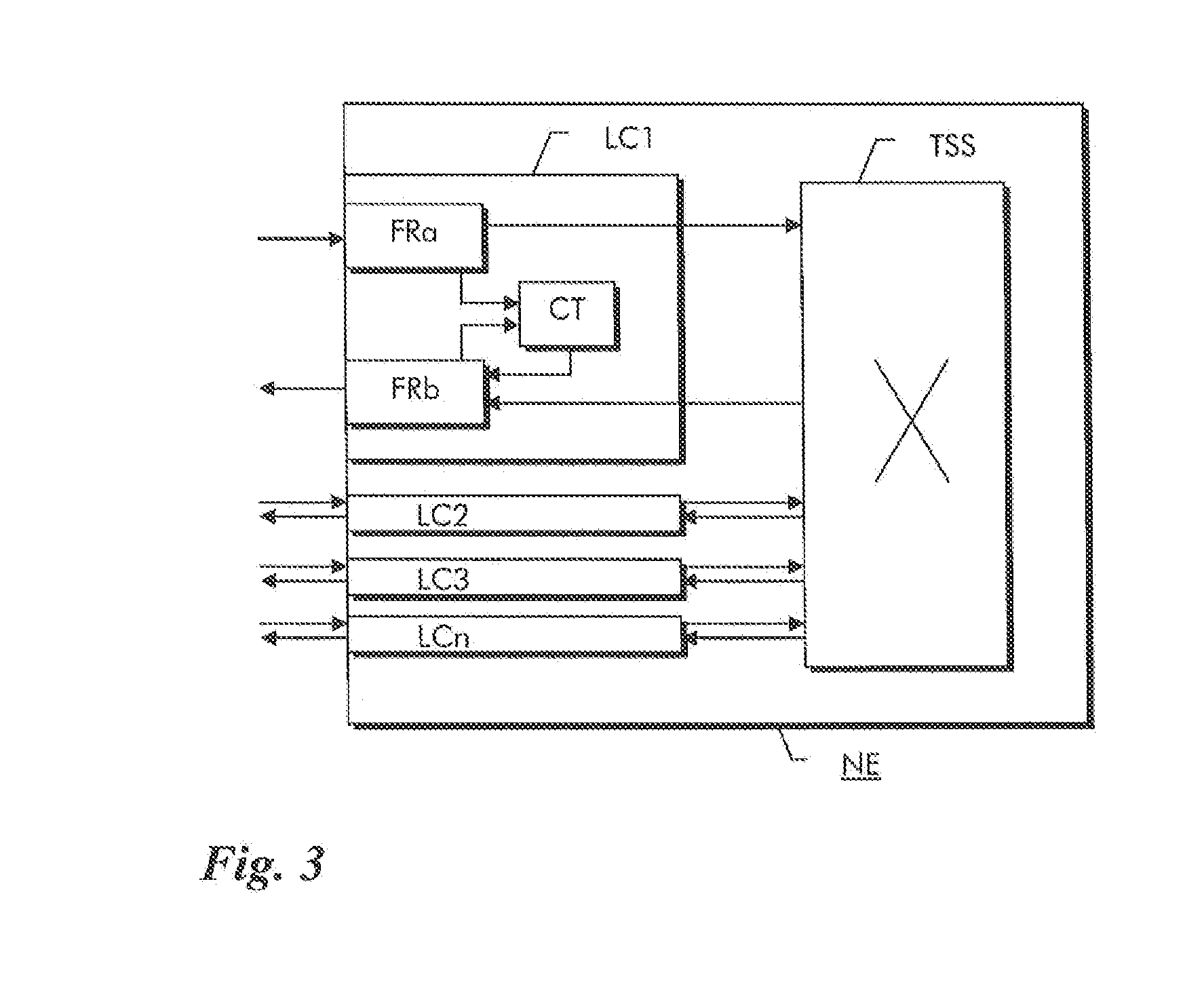Method and related network element providing delay measurement in an optical transport network
a technology of optical transport network and delay measurement, applied in the field of telecommunications, can solve the problems of achieve the effect of improving delay measurement, low granularity and high jitter of measured delay valu
- Summary
- Abstract
- Description
- Claims
- Application Information
AI Technical Summary
Benefits of technology
Problems solved by technology
Method used
Image
Examples
Embodiment Construction
[0014]The principle of a loop back delay measurement is shown schematically in FIG. 1. Two network elements NE1, NE2 are connected over a bidirectional path P. Path P is a sequence of optical links and may lead through a number of intermediate network elements, which are not shown for the sake of simplicity. The path is represented by an optical data unit ODUk. Such optical data units are transported in multiplexed form within a framed transport signal, which contains consecutive transport frames that repeat with a predefined, fixed frame rate. The transport frames are termed Optical Transport Unit of size k (OTUk). The optical data units can be for example an ODU0 that repeats approximately every 100 μsec (more precisely every 98.4 μsec according to ITU-T recommendation G.709, table 7-4).
[0015]Each ODUk has an overhead section which includes a path monitoring (PM) field as described in ITU-T G.709 chapter 15.8.2.1 and FIG. 15-13. The PM field contains a subfield for path delay meas...
PUM
 Login to View More
Login to View More Abstract
Description
Claims
Application Information
 Login to View More
Login to View More - R&D
- Intellectual Property
- Life Sciences
- Materials
- Tech Scout
- Unparalleled Data Quality
- Higher Quality Content
- 60% Fewer Hallucinations
Browse by: Latest US Patents, China's latest patents, Technical Efficacy Thesaurus, Application Domain, Technology Topic, Popular Technical Reports.
© 2025 PatSnap. All rights reserved.Legal|Privacy policy|Modern Slavery Act Transparency Statement|Sitemap|About US| Contact US: help@patsnap.com



